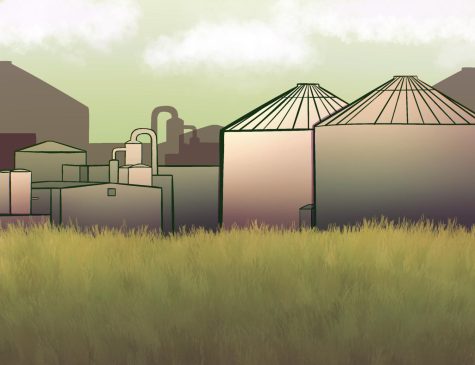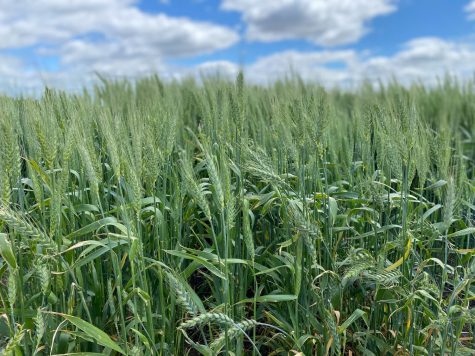Smoke is on the horizon
Tuesday’s air quality reached unhealthy range for sensitive groups
Students walk to and from classes in hazy weather, Sep. 6.
September 7, 2022
The Palouse can expect more smoky skies and low air quality in the coming days as the Inland Northwest reaches the height of wildfire season.
A blanket of smoke from wildfires in Oregon settled over Pullman Tuesday morning and is expected to linger until late Wednesday, according to Laurie Nisbet, meteorologist with the National Weather Service’s Spokane office.
The quality of Pullman’s air sat in the “unhealthy for sensitive groups” range of the U.S. Air Quality Index Tuesday afternoon, with measurements from the Washington Department of Ecology topping out at a rating of 144. Air quality began improving by Tuesday evening.
The Environmental Protection Agency, which established the AQI, recommends the general public limit outdoor activities, while sensitive groups shelter inside when the air quality is considered unhealthy for sensitive groups. If air quality worsens and enters the “unhealthy” range, the EPA recommends everyone limit outdoor activity and stay in filtered air to limit exposure to pollutants that pose potential health risks, according to the AirNow air quality guidelines.
The Palouse will see some relief from the smoke Wednesday afternoon as a cold front moves in from the West. Nisbet said that although the cold front will likely push the smoke from the area, it may also bring in more smoke from wildfires burning in the Cascades.
Pullman’s air quality is expected to worsen Friday as winds shift again. Gusts coming from the northeast are expected to bring in smoke from wildfires burning in Northern Idaho and Western Montana, Nisbet said.
“The winds are changing directions every day,” Nisbet said. “Given the fact that we have fires kind of surrounding the Palouse, the wind direction does matter, because that’s what blows the smoke or the haze into or out of the Palouse.”
The majority of the smoke that settled over Pullman on Tuesday stemmed from the over 50,000-acre Double Creek fire in Northeast Oregon, which is currently the state’s largest active wildfire. The Oregonian/OregonLive reports the wildfire was estimated to be 0% contained as of Monday.


















